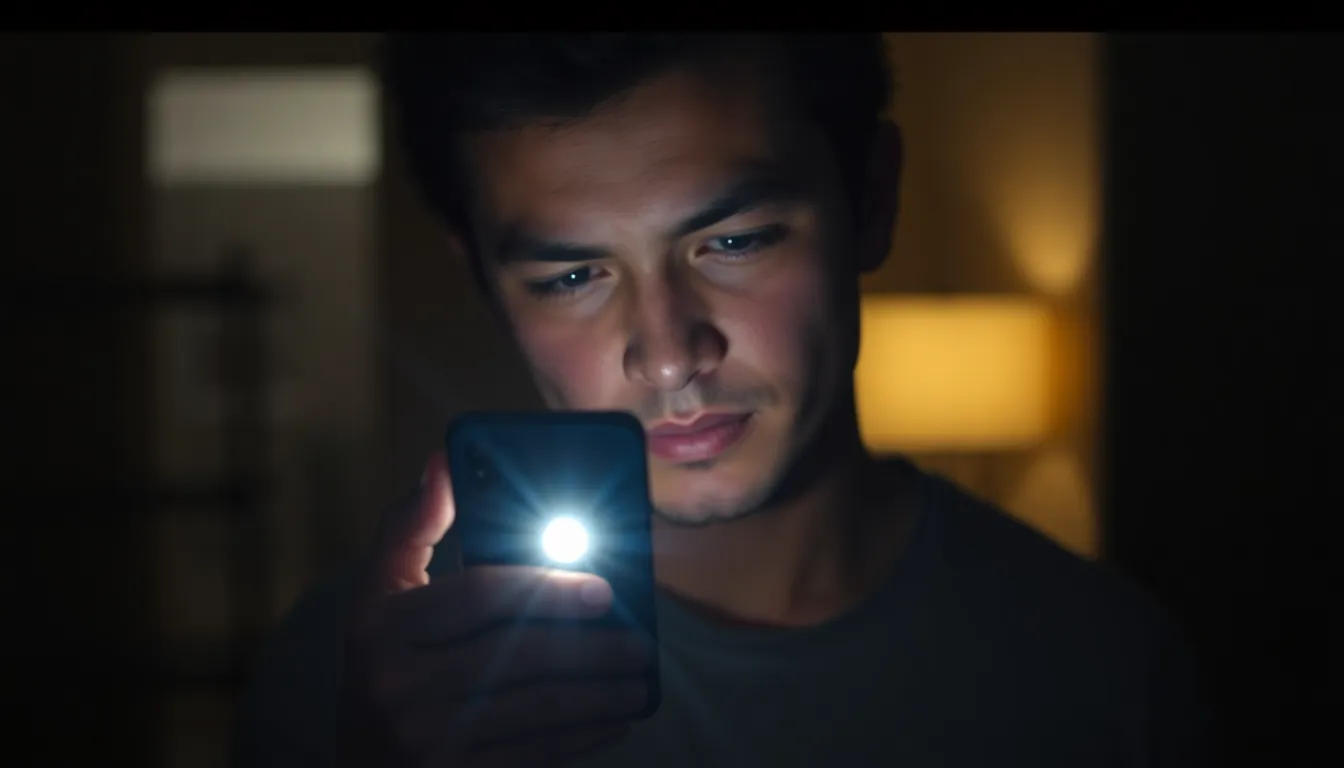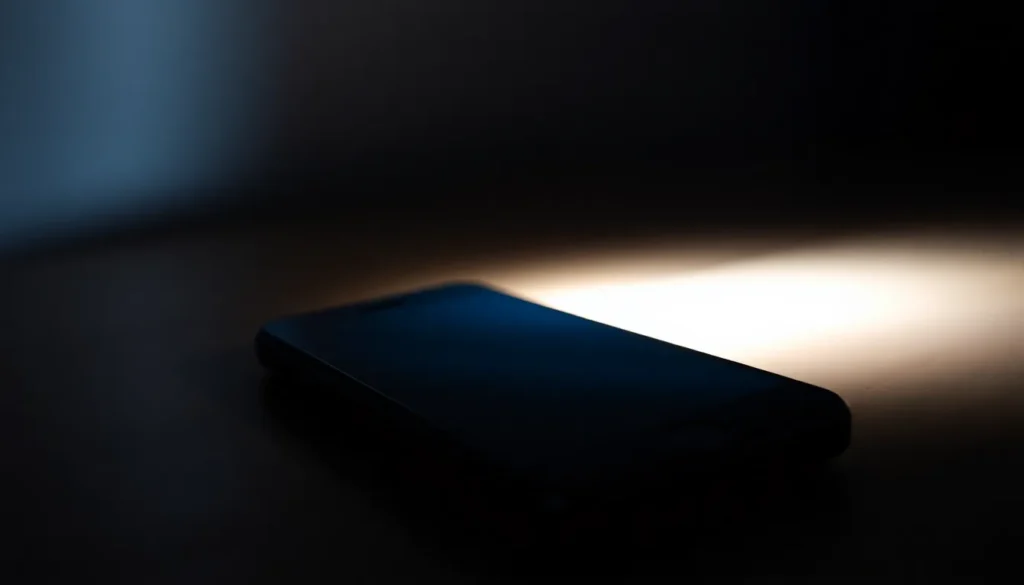Table of Contents
ToggleEver found yourself in a dark room, fumbling for your iPhone, only to be greeted by the blinding light of the flashlight? It’s like a mini-sunbeam right in your eyes! But have you ever wondered if that bright LED could actually do some damage?
In a world where everyone’s glued to their screens, the question of whether an iPhone flashlight can harm your eyes is more relevant than ever. With so many myths floating around, it’s time to shed some light on this topic—pun intended! Spoiler alert: your iPhone flashlight isn’t the villain in your eye health saga, but there are some things worth knowing. Buckle up as we dive into the dazzling world of smartphone illumination and eye safety.
Overview of iPhone Flashlight Functionality
The iPhone flashlight serves as a practical tool for illumination in various scenarios. Understanding how it operates and its intensity is important for safe usage.
How iPhone Flashlight Works
The iPhone flashlight utilizes LED technology to produce light. LEDs generate illumination by passing electricity through a semiconductor material. This process results in a low-energy, bright output, making it efficient for short bursts of light in dark environments. Many users activate the flashlight feature quickly through the control center or by asking Siri. The design allows for immediate access, highlighting convenience during emergencies.
Intensity and Brightness Levels
The brightness of the iPhone flashlight typically reaches about 1000 lumens, depending on the model. Adjustments in intensity can occur through simple settings, making the flashlight versatile for different lighting needs. Users can select lower settings to reduce glare or conserve battery life during extended use. Such flexibility ensures it meets users’ needs without creating overwhelming brightness. This capability makes the iPhone flashlight an essential tool for various practical applications.
Potential Risks of Bright Light Exposure

Bright light exposure from devices like iPhone flashlights can lead to several vision-related risks. Understanding these risks is key to protecting eye health.
Short-Term Effects on Vision
Immediate discomfort often accompanies bright light exposure. Users may experience temporary glare, reduced contrast sensitivity, or an afterimage effect. Staring directly into a powerful LED light can lead to visual disturbances that may last for a few moments. Pupils can constrict rapidly, causing difficulty in adjusting to surrounding light levels. Frequent exposure to intense light sources can contribute to fatigue, leading to momentary blurriness or discomfort afterward.
Long-Term Eye Health Concerns
Prolonged exposure to high-intensity lights raises potential long-term eye health concerns. Research suggests that excessive brightness could contribute to retinal damage over time. Some studies indicate that consistent, bright light exposure might be linked to an increased risk of conditions like macular degeneration. Users who regularly utilize high-lumen flashlights should take precautions, including limiting direct eye contact with the light. Regular eye examinations help monitor any changes that may arise from extended exposure to bright lights.
Scientific Studies and Findings
Research has focused on the effects of LED light on eye health. Several studies indicate that while short bursts of LED exposure, such as from an iPhone flashlight, do not typically cause lasting damage, discomfort can occur. Symptoms like temporary glare or afterimages may result from intense brightness.
Research on LED Light and Eye Damage
A study published in Ophthalmology examined LED light exposure and its impact on retinal cells. Researchers found that prolonged and intense exposure might contribute to oxidative stress, potentially leading to cellular damage. No significant evidence proves that brief exposure from smartphone LED lights causes permanent harm. Guidelines suggest limiting direct exposure to high-intensity LED sources to avoid discomfort.
Expert Opinions and Recommendations
Ophthalmologists commonly address concerns about LED light and eye health. Many experts emphasize maintaining a safe distance from the light source while using devices. Recommendations suggest looking away from bright lights whenever possible and using the lowest brightness settings for tasks. Regular eye check-ups can help monitor any changes related to light exposure.
Practical Tips for Safe Use
Using an iPhone flashlight safely requires awareness of distance and exposure time.
Distance and Exposure Time
Maintain a safe distance when using an iPhone flashlight. Keeping the light source about 12 to 18 inches away from the eyes reduces discomfort. Limiting exposure time is equally important. Consider using the flashlight only for brief periods to minimize potential visual disturbances. Avoid shining the light directly into the eyes, even for short bursts. Using the lowest brightness settings can help, especially in darker environments. Protecting your eyes from harsh light ensures a comfortable experience while performing tasks in low-light conditions.
Alternative Lighting Options
Explore alternative lighting options for better eye safety. Opt for ambient lights when navigating dark areas to reduce reliance on bright flashlights. LED lanterns can provide softer illumination, helping to avoid discomfort. Smart light options offer adjustable brightness, which allows control over light intensity. Utilizing lower-wattage bulbs in lamps or overhead fixtures can create a more pleasant environment. Carrying an LED headlamp can also free up hands while providing adequate light. Consider these alternatives to find a suitable balance for visibility and eye protection.
Using an iPhone flashlight is generally safe for eye health when used responsibly. While brief exposure to its bright LED light doesn’t typically cause lasting damage, users should remain mindful of their distance and duration of use. Taking simple precautions like adjusting brightness and avoiding direct eye contact can enhance comfort and safety.
Incorporating alternative lighting options can also create a more eye-friendly environment. Regular eye examinations are essential for monitoring any potential changes due to light exposure. By following these guidelines, users can enjoy the convenience of their iPhone flashlight without compromising their eye health.







